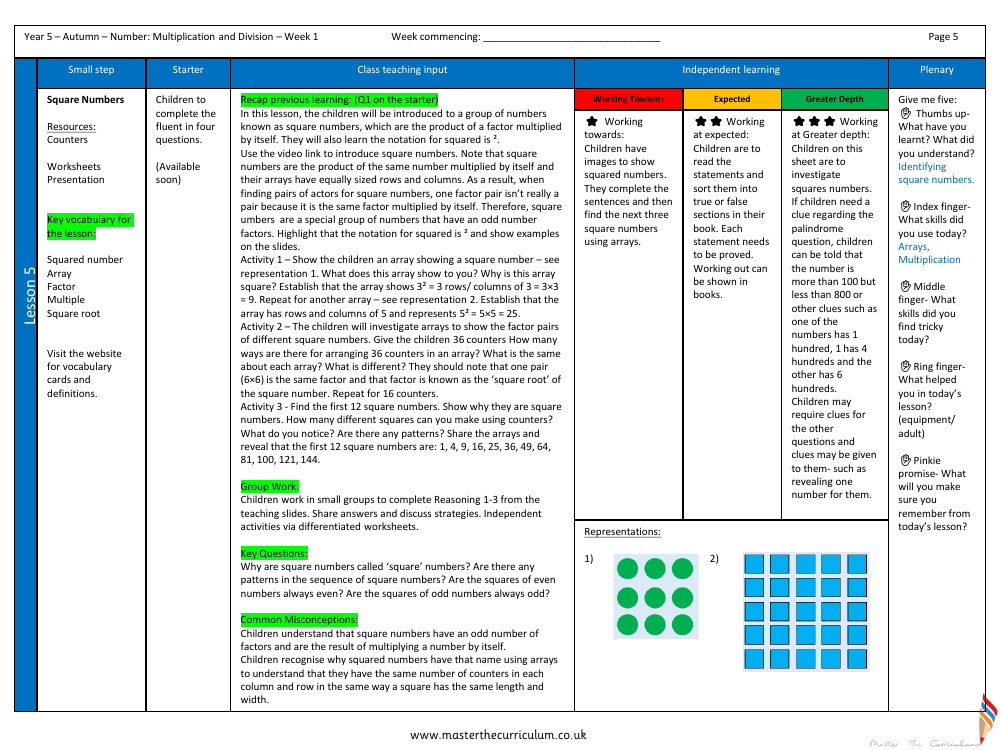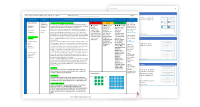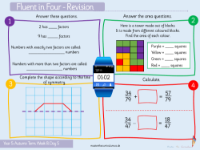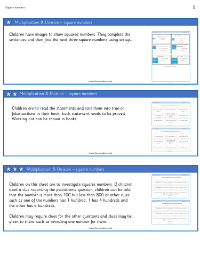Multiplication and Division (1) - Square Numbers (1) - Planning

Maths Resource Description
The Year 5 mathematics lesson on square numbers introduces students to these unique figures that are the result of multiplying a number by itself. The term 'square number' is explained through the use of arrays, which are visual representations with rows and columns of equal length, mirroring the dimensions of a square. The notation for squared numbers, represented as ², is also highlighted. Students are encouraged to explore square numbers by arranging counters into arrays, discovering that square numbers have an odd number of factors because one of the factor pairs consists of the same number. This leads to the understanding of the 'square root'—the number that, when multiplied by itself, results in the square number. The lesson includes activities where students find and represent the first twelve square numbers using counters, and through this hands-on approach, they identify patterns and deepen their understanding of the concept.
During the lesson, students work in groups and independently, using worksheets to apply reasoning to the concept of square numbers. They are prompted to consider why square numbers are named as such and to identify patterns in their sequence. Questions are posed to stimulate critical thinking, such as whether the squares of even numbers are always even, and whether the squares of odd numbers are always odd. The lesson addresses common misconceptions, ensuring students grasp that square numbers are the product of a number multiplied by itself and why they possess an odd number of factors. To consolidate learning, the lesson concludes with a reflective 'Give me five' activity, prompting students to consider what they've learned, the skills they've used, and what they found challenging, as well as to make a commitment to remember key takeaways. Differentiated tasks are provided to cater to varying levels of understanding, from visual representations for those working towards expectations to more complex investigations for those at greater depth.



